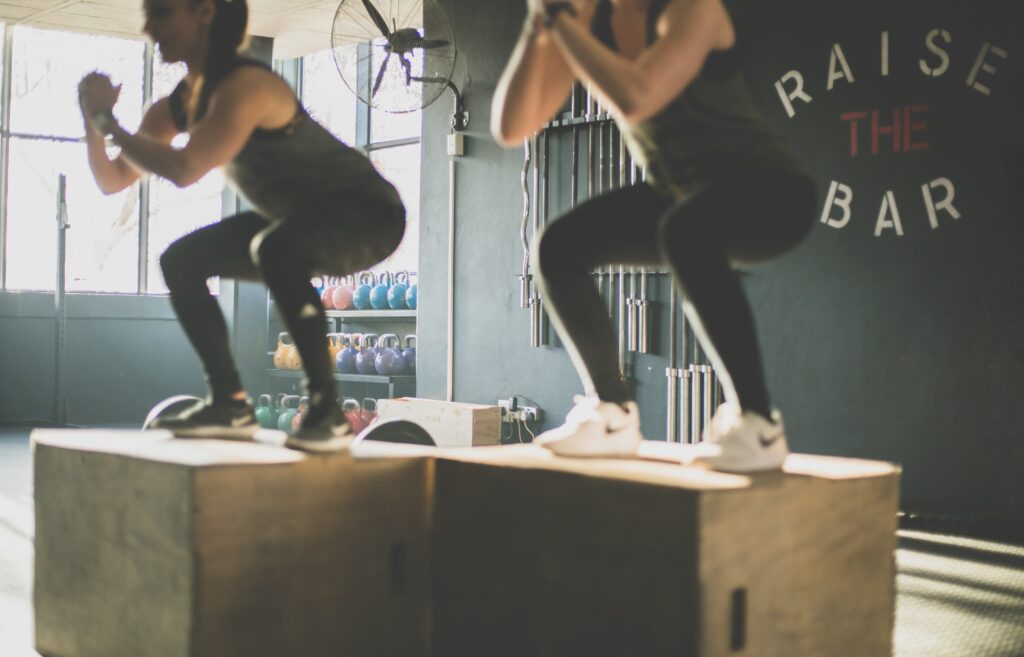Need Speed? 10 Tips to increase your cycling speed with stronger legs.
Whether you are cycling for fun or for sport, chances are you have faced a couple of hills, and you may just want to be able to reach the top without gasping for air! Training your body to be one with the bike and the open road takes more than just cardiovascular fitness. If you are reading this, then you probably already are passionate about cycling. To consistently increase your cycling speed some attention needs to be paid to your pumping machine – your legs!
Creating a leg routine into your workouts will work your endurance muscle fibers making them more resistant to fatigue. More endurance means stronger legs when cycling hills. No longer is there a need to go to the gym. These exercises will not only help you with your cycling speed but will also help you with developing good balance and coordination. We will show you the best at-home leg exercises to help you build stronger legs and increase your speed in the long run.
Time to get warmed up! Always take time to warm up those muscles! *
LYING QUAD STRETCH
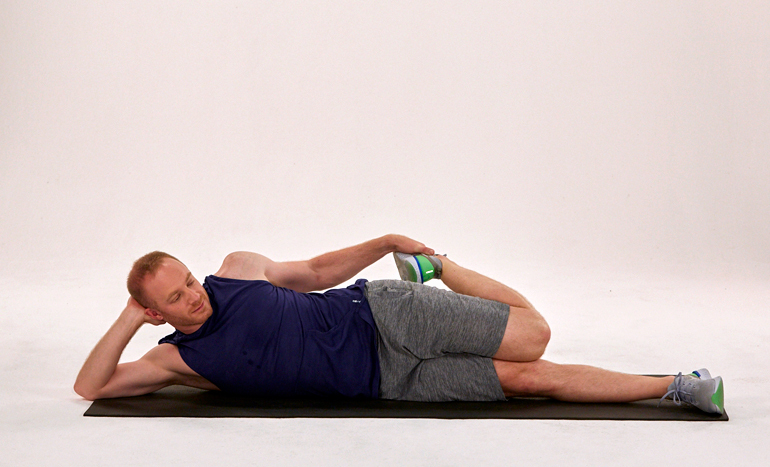
Lie on one side. Keep your bottom leg straight and bend your top knee so your foot is by your bottom. Hold your top foot with your hand, pulling it toward your bottom. Keep your hips stable so you are not rocking back as you pull. Hold for 30 seconds to 2 minutes. Switch sides and repeat.
STANDING HAMSTRING STRETCH
Bend your left knee slightly. Gently lean forward while placing your hands on your bent right leg. Be sure to keep your back straight to avoid hunching over your leg. Hold this stretch for 10 seconds and work up to 30 seconds.
Now that you are good and warmed up choose between one to four of these exercises to strengthen your legs for biking. Begin with the exercises without weights. As you become stronger m you may want to add some dumbbells or added weights to the routine. For the best results, try and work all these strengthening techniques into your routine at least twice a week. You will want to get in your squats, lunges, and jumps early in the workout. Save the planks for the end of the routine.
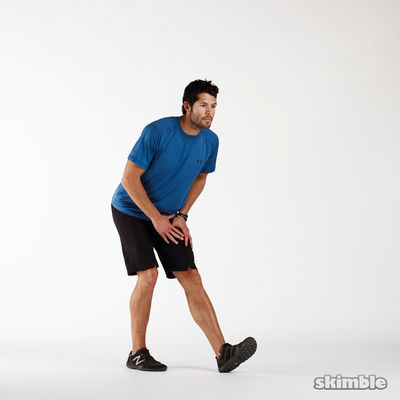
STEP UPS
Using an aerobics block, about 6 inches high. To start: step up with one foot on top of the block. Let your “trailing foot” hover over the floor without touching. Keep an upright posture and hold for about 3 seconds. Return to the start position and repeat 5-10 times. Alternate leg.
SPLIT SQUAT JUMPS
Stand upright with your feet together and your arms at your side. Jump in the air and land in a split squat position so that your right leg is forward with the knee bent and your left leg is backward standing on your toes. Without pausing, jump in the air again and reverse the position of your legs. Repeat for a complete set.
KETTLE BELL SQUAT
Stand with feet wide, toes pointing forward, and hold a heavy kettle bell in front of you with palms facing toward you. Keeping your chest lifted, squat until your thighs are parallel to the ground. Pause, and then rise to stand and repeat. Do 20-25 reps.
CALF RAISES
Constantly expanding and contracting, your calves are one of the most active muscles when peddling or resting. This is one of the best exercises to strengthen legs for biking. Stand up straight, then push through the balls of your feet and raise your heel until you are standing on your toes. Then lower slowly back to the start.
HAMSTRING CURL WITH STABILITY BALL
These will make your leg stronger for cycling (plus it is just fun to do!) Lay down on the floor and place the back of your calves resting against the ball. Lift your bottom off the floor by lifting hips toward the ceiling. Pull the ball in with your feet. Push the ball back out. Return to start position. Repeat 25-50 times
SINGLE-LEG REACH
Stand with all your weight in your left foot, tighten your core. Reach your torso forward as you lift your right leg behind you. Reach your arms overhead for balance as your torso and leg come parallel to the floor.
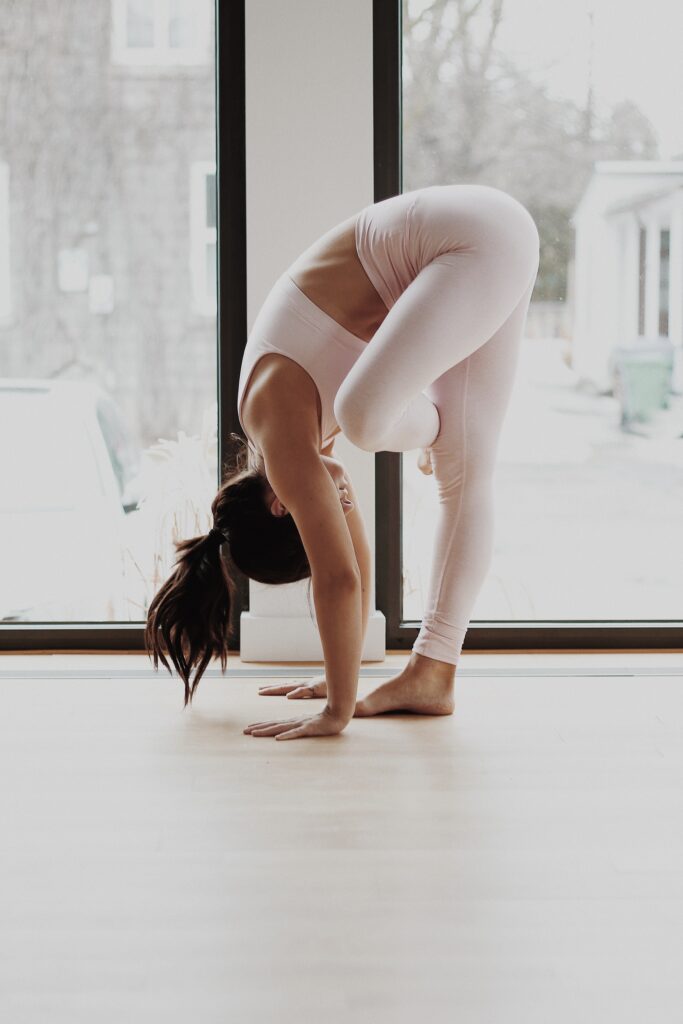
Hold this position for a moment and stretch through your right heel to engage the back of the right leg. Moving in one piece, lower your right leg toward the floor as you return to standing upright, resting the right foot lightly on the ground. This completes one rep. Do 15 reps before switching sides.
SINGLE-LEG BALANCE TOUCH
Begin standing with arms overhead with all your weight on your right foot. Keeping your spine long, reach forward bending your right knee, and touch both hands to the ground. Keep your abs tightened to keep your torso stable. Lower your left leg down while lifting your torso, bringing your arms overhead to complete one rep. Do 15 reps before switching sides.
LUNGES
Lunges are an exceptional exercise for conditioning your lower body. They stress the muscles from a perfect angle to develop incredible shape and symmetry in your legs, thighs, and hind end!
Because they require balance, lunges also build neuromuscular and functional capacity – helping your body go through its daily motions and make for an ideal exercise to strengthen legs for biking.
Keep your upper body straight, with your shoulders back and relaxed and chin up. tighten your core. Step forward with one leg, lowering your hips until both knees are bent at about a 90-degree angle. Your front knee should be directly above your ankle, not pushed out too far, do not let your other knee does not touch the floor. Keep the weight in your heels as you push back up to the starting position.
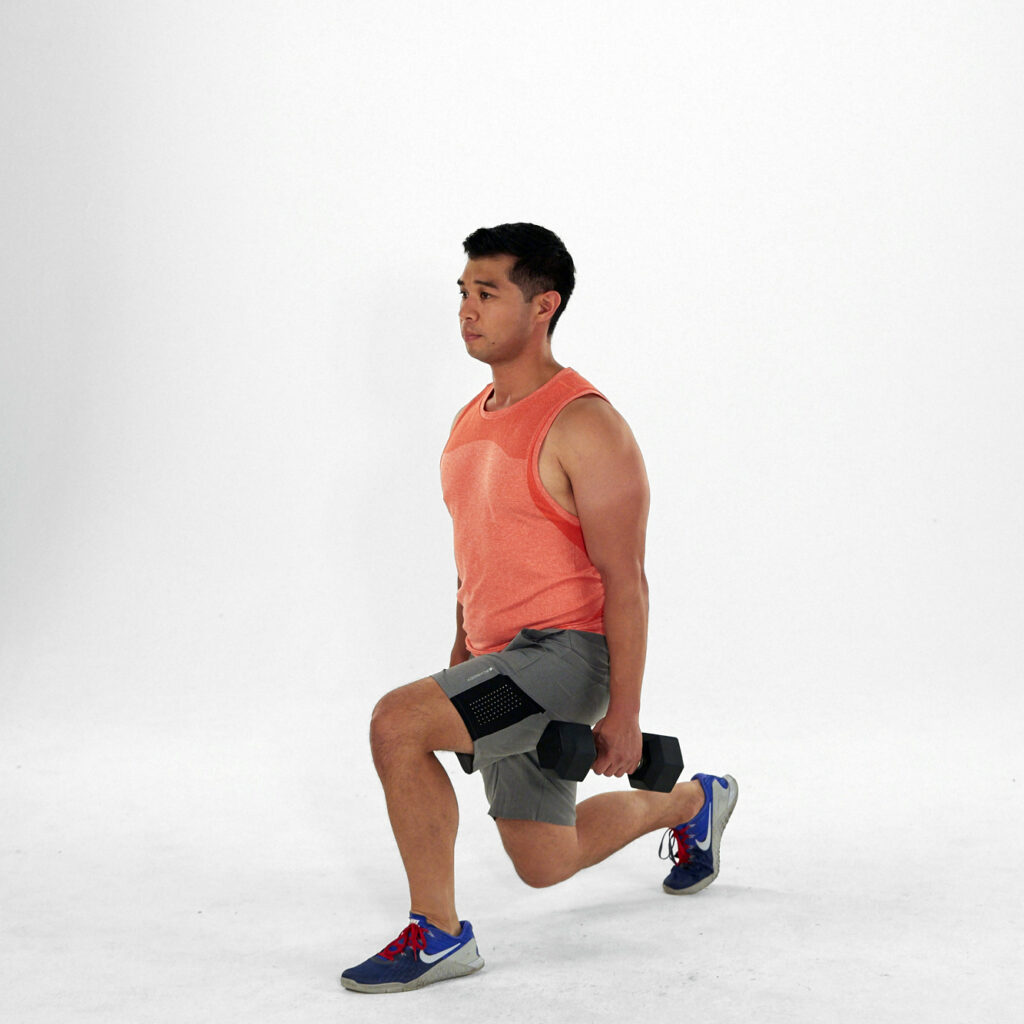
REVERSE LUNGE
It creates muscular balance by initiating the movement backward as opposed to most other exercise movement patterns that take you forward and bias your musculature toward forwarding motion. Start facing forward, with your feet shoulder-width apart, and your arms at your side. Step back with one leg far enough to allow your knees to bend at 90-degree angles. You can simultaneously bring your arms up to act as a slight counterbalance. If you want a greater challenge, hold light weights in your hands. Work up to 2 sets of 10 repetitions on each leg.
IMPORTANT – To go back to the start position, start dropping your arms and lift from the heel of your front leg. DO NOT PUSH OFF YOUR BACK LEG. This simple advice will dramatically improve the effectiveness of your reverse lunge, give you a far tighter, leaner muscles and get you much better results in half the time.
REVERSE LUNGE AND KICK
Step back with your left foot coming into a deep lunge bending both knees to 90 degrees. Press the right heel into the ground as you push off with your left foot, kicking your left leg to touch your left toes to your right hand. With control, return to the lunge position. This completes one rep. Do 15 reps before switching sides.
PLANK
Place your elbows directly under your shoulders and rest your forearms on the ground. Pop up on your toes, keeping your body in a straight line from head to toe. Keep your eyes down on the ground – look between your hands. Do not strain your neck. Breathe deeply – keeping your core tight. Hold for as long as you can – increasing your time a little each session.
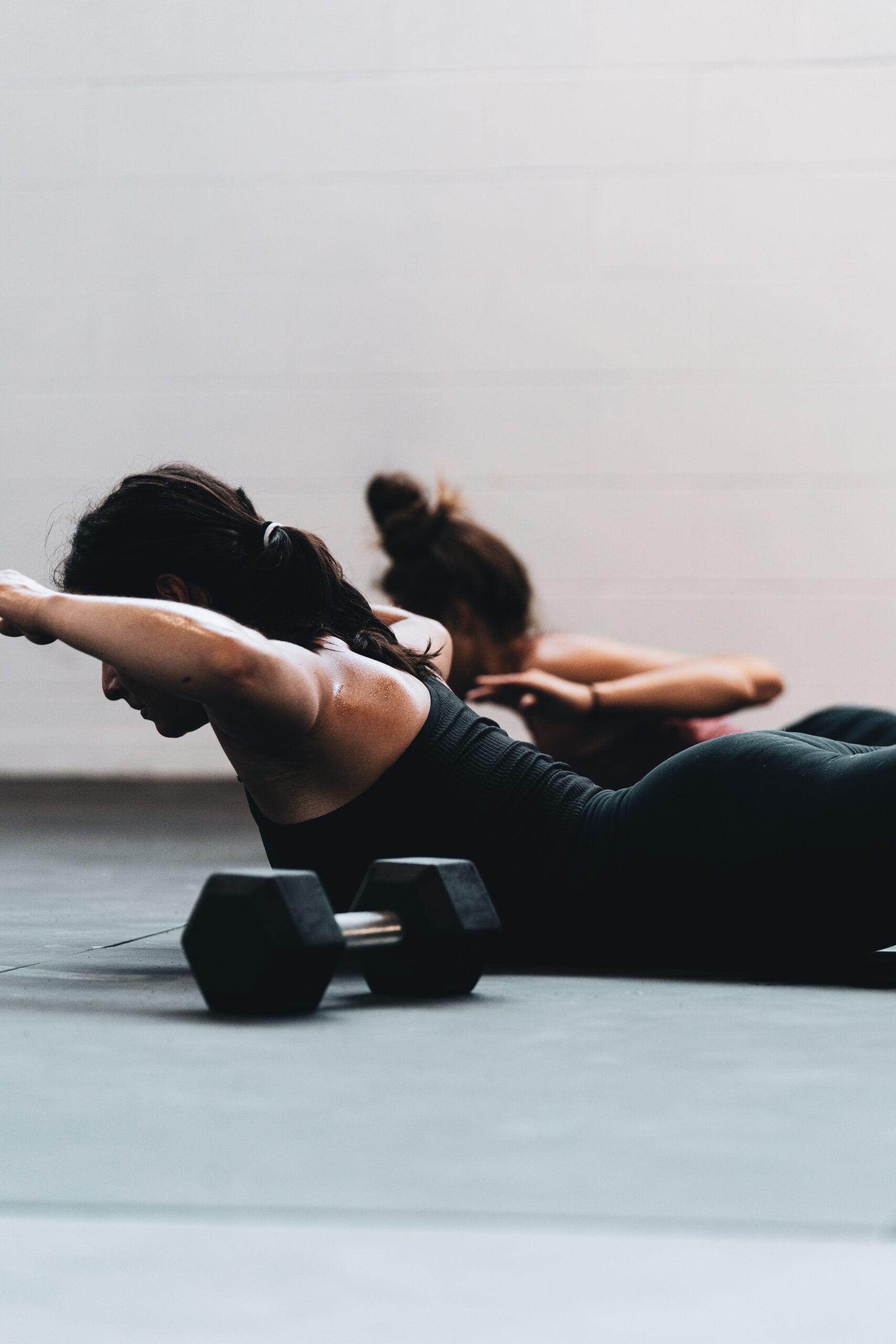
By adding planks into your routine, it will help with balance by working to tighten your core. Do not underestimate the power of a solid core to also help in your overall goal of increasing your cycling speed. When you strengthen the core of
your body, this core strength helps radiate strength throughout the entire body and its extremities.
BONUS:
Need to work on your stabilization?
Work on those abductor muscles:
LATERAL LUNGE
Start with your feet shoulder-width apart. Shift your weight to your left leg, push your hips back, and step laterally (to the side), to the right squatting to a 90-degree angle at the right knee. Try to sit down with your bottom, keeping your back as upright as possible. Your right leg should be extended. Keep your hands in front of your body for balance. Lower your body as low as you comfortably can before returning to the starting position. Repeat with the opposite leg. Do 3 sets of 15–20 repetitions on each side.
Try these techniques for a month to see if it helps. After a short while, you should see these have strengthened your legs for cycling especially a noticeable difference in the strength for cycling uphill. You can find more detailed videos of these exercises on YouTube. * Use these exercises as a guide and listen to your body. We are not medical experts or trainers – these findings are bases on the study and personal actions. Please use your best judgment when attempting any workout.

